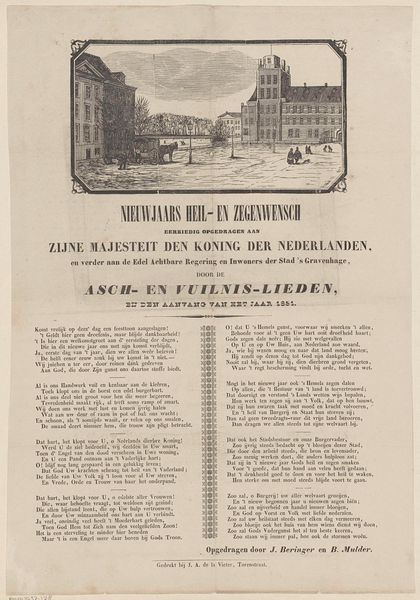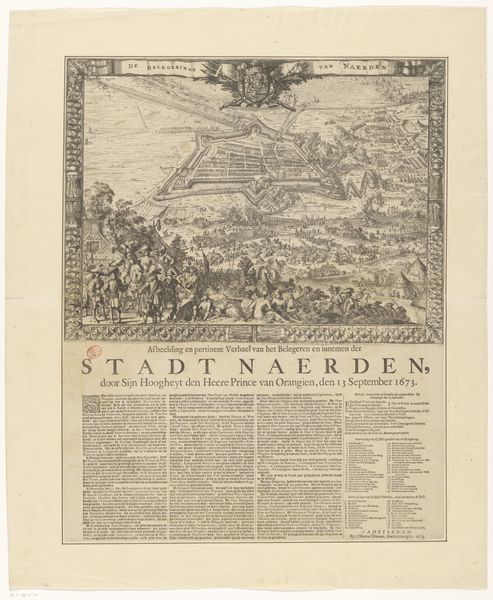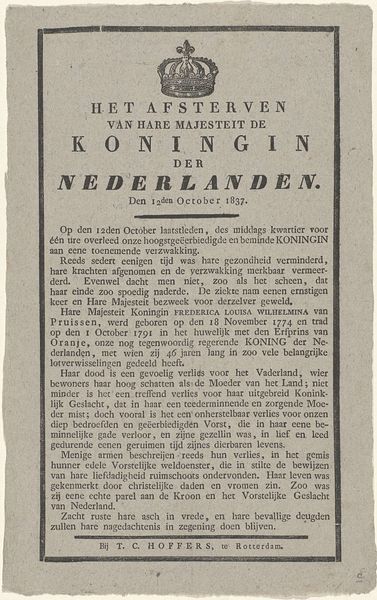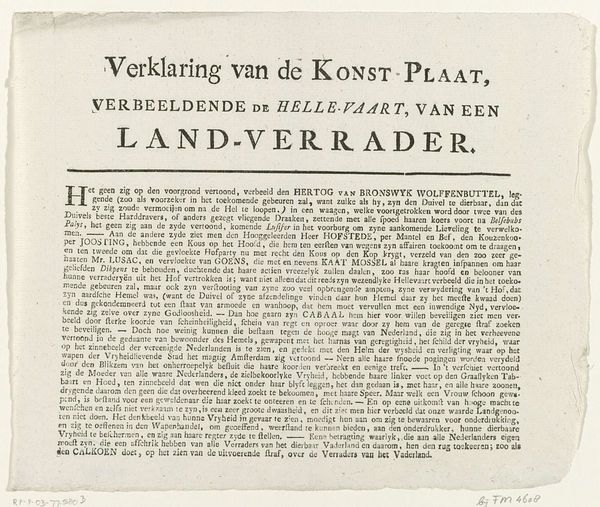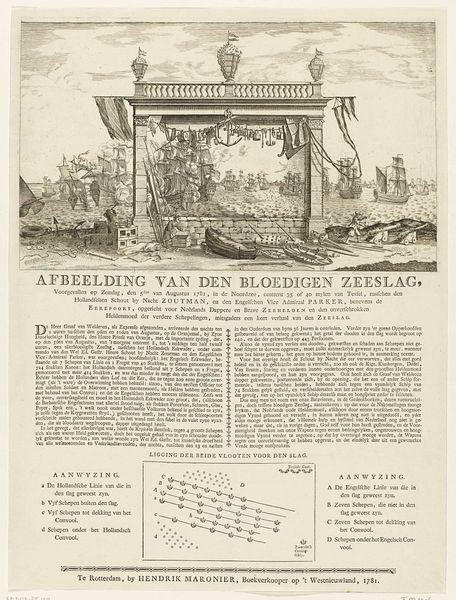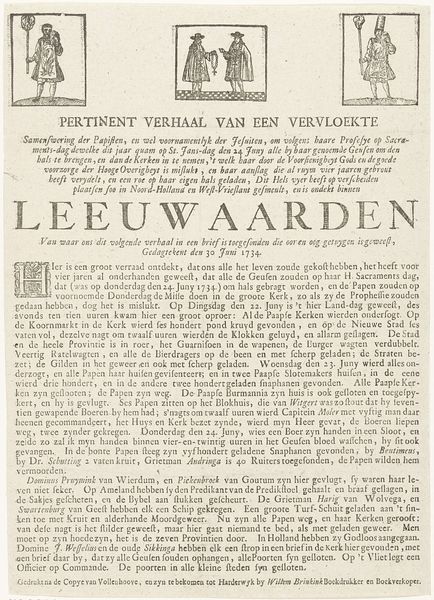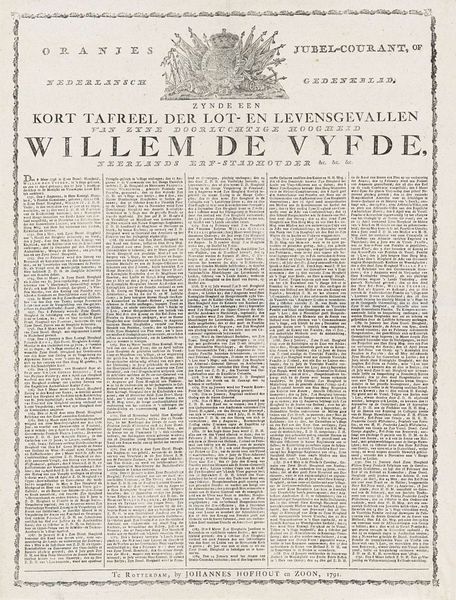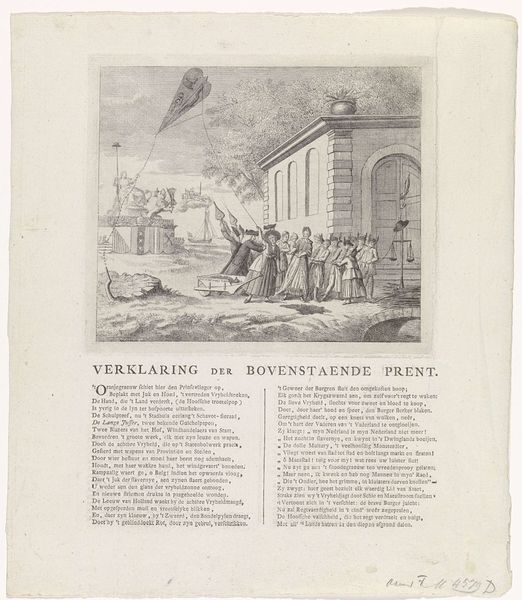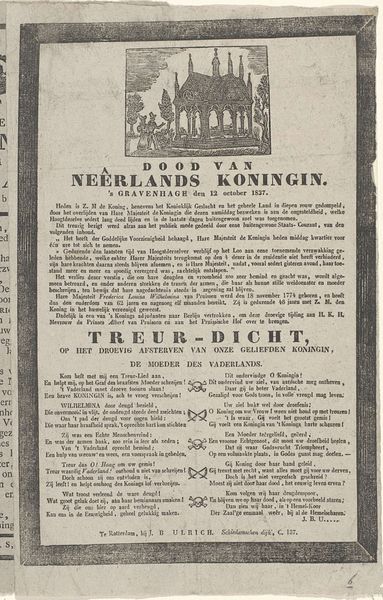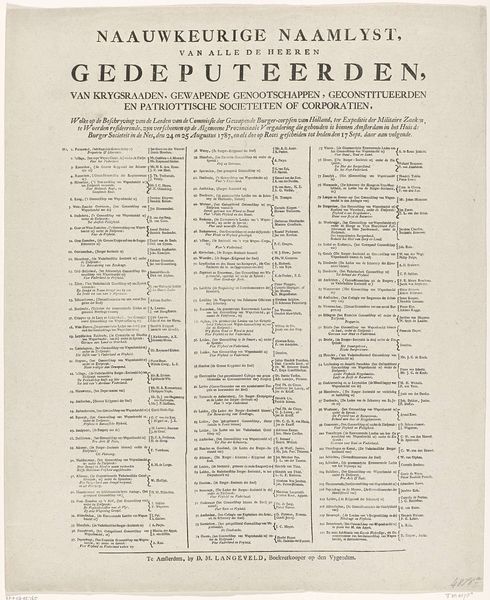
print, engraving
# print
#
folk-art
#
cityscape
#
engraving
Dimensions: height 558 mm, width 468 mm
Copyright: Rijks Museum: Open Domain
Curator: Let’s examine this New Year’s greeting from the tower watchmen of Leiden, dating from 1847 to 1848. It's an engraving, showcasing a detailed cityscape. Editor: It gives off a very official yet celebratory air. The image, combined with that formal typeface, it feels very much of its time, like an important declaration. Curator: Observe how the print is structured: an illustration of Leiden above, followed by bold text presenting the dedication, and then dense columns of text. There’s a striking use of linear perspective within the engraving, guiding the eye to the tower and city hall. The frame itself echoes this order with alternating circular motifs along its edges, creating an impression of unity within multiplicity. Editor: Absolutely, and thinking about 1848, a year of widespread revolutions in Europe, this piece speaks volumes about the desire for order and stability amidst potential upheaval. This "Heil- en Zegenwens," blessing and good wishes, isn't just a greeting. It's a very conscious endorsement of existing authority during turbulent times. Who was H. Van der Ark, the Stad-Trompetter named here? And what was his status in Leiden to put out this pronouncement? Curator: Excellent point! That information, though absent, does highlight a vital interpretive consideration: the print's relationship to civic authority. It becomes apparent as you examine how geometric balance functions not merely decoratively but as reinforcement of the status quo by framing civic structures centrally within ordered linear perspective Editor: It's not simply a picture, but active construction of ideology and power, as disseminated by those already at the top of a profoundly unequal power system—municipal officers alongside the town watch. You can interpret those decorations lining the blessing alongside a trumpet in such light; not innocent flourishes, but reminders to support a community based on social classes, expectations and duties Curator: That adds a necessary and critical understanding; my own inclination was toward a visual appreciation of composition until contextual dimensions opened insights I had originally ignored. Editor: Precisely. Understanding that historical, revolutionary background truly enhances its message, changing this work of art from just a decorative image to an overt act that underscores social order, even within revolution!
Comments
No comments
Be the first to comment and join the conversation on the ultimate creative platform.
